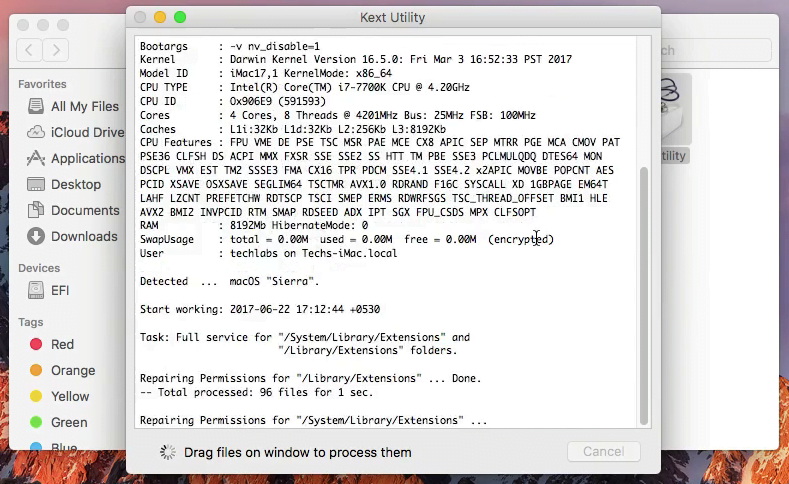

To avoid such unpleasant scenarios, it’s crucial to ensure the highest quality of kext code. And if a kext is loaded at system startup and contains an error, it will crash the system each time it starts, thus complicating system recovery. But if a kernel module fails, the worst-case scenario is a crash of the entire operating system and a reboot of the device. The reason for this strict quality requirement is simple enough: the worst-case scenario for an application is a crash and emergency exit.
#HOW TO KEXT UTILITY CODE#
One of the main restrictions when creating a kext is that the code of the kext itself, as indicated in Apple’s official documentation, should be essentially flawless.
#HOW TO KEXT UTILITY DRIVER#
writing a specific device driver that the DriverKit API doesn’t cover (for example, a graphics driver).supporting a certain type of file system (including creating a new one).There are tasks that can’t be implemented without a kernel extension, including:
#HOW TO KEXT UTILITY INSTALL#
Also, with the introduction of System Extensions and DriverKit, Apple has reduced the number of permitted APIs and cases where kexts can and need to be used.īut since the capabilities of System Extensions and DriverKit don’t cover all kext use cases, many developers still have to build and install custom kernel extensions. The functionality available in user mode is sufficient for most tasks. Usually, there’s no need for creating a kext when developing a macOS solution. It’s the minimum unit of executable code that can be loaded and used in the kernel. kext kernel extensionsĪ kernel extension, or kext, is an application bundle used for extending the functionality of the macOS kernel. Related services Custom macOS Development Services. Let’s look closer at the peculiarities of this macOS feature. However, adding System Extensions and DriverKit to macOS didn’t completely erase the need for kernel extensions (kexts). This approach changed the way developers access kernel parts of the system and improved the security and stability of macOS. In 2019, Apple introduced macOS version 10.15, also known as macOS Catalina, which contained System Extensions and DriverKit and moved most kernel APIs to the user space. This hybrid kernel was developed by Apple and is used in the macOS family. The macOS kernel is XNU - an acronym for X is Not Unix. It does so using mechanisms for interprocess communication and by providing applications with access to operating system calls. The kernel usually provides access to applications’ executable processes. The kernel is the central part of an operating system, providing applications with coordinated access to system resources: CPU, memory, external hardware, external input/output devices, and so on. Introduction to the macOS kernel and kernel extensionsĬonclusion Introduction to the macOS kernel and kernel extensions


Cloud Infrastructure Management Services.MacOS Kexts: macOS Kernel Extension Development


 0 kommentar(er)
0 kommentar(er)
